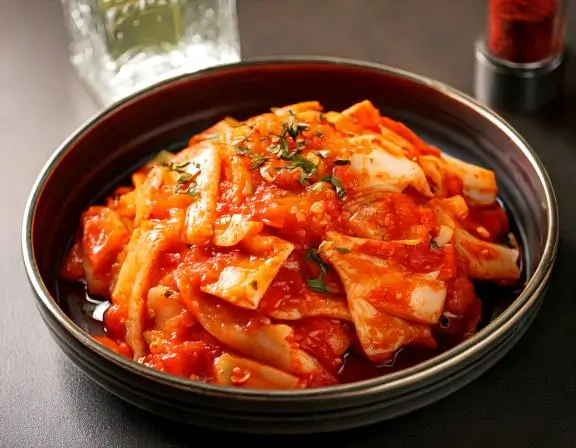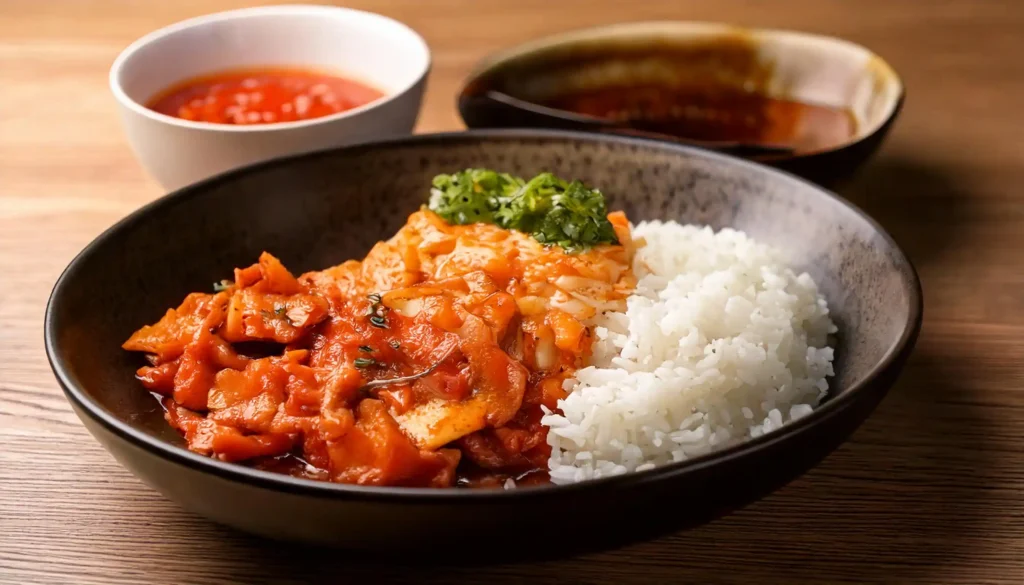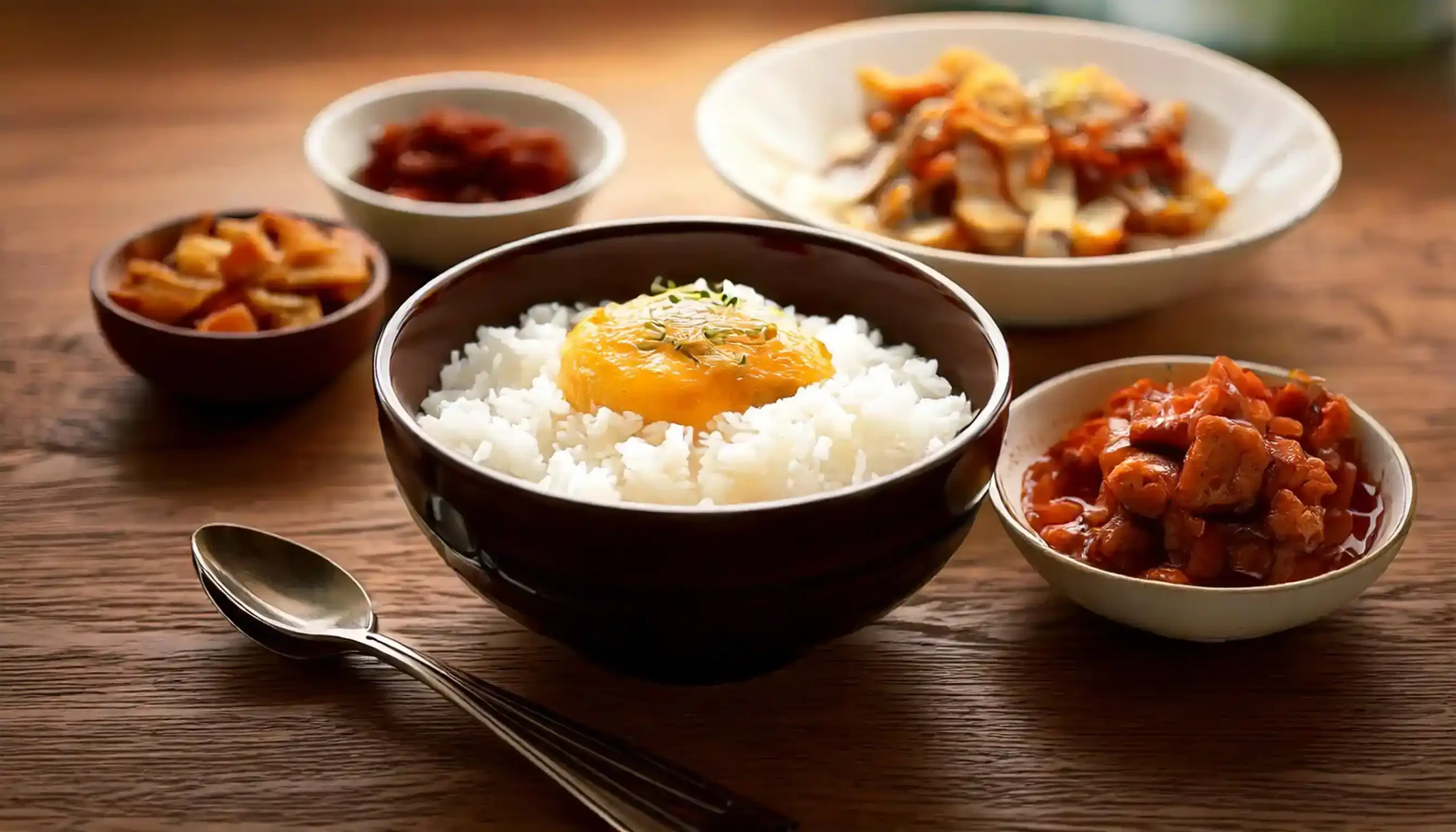A typical Korean breakfast often includes rice, soup, and small side dishes. This meal can vary, but the core components remain naturally consistent. Let’s explore what makes this morning meal so unique and delicious.
Understanding the Culture of Korean Morning Meals
The Korean breakfast is a far cry from a simple grab-and-go pastry. Indeed, it’s a meal that often mirrors lunch or dinner in complexity and components. Naturally, this reflects a cultural emphasis on having a fulfilling start to the day. This focus ensures people have the energy to tackle daily activities. Therefore, understanding this meal is understanding an important aspect of Korean culture.
Essential Components of a Korean Breakfast
- Rice (Bap): Plain cooked rice is the natural base for nearly every Korean meal. White rice is most common. However, brown rice or mixed grain rice can also appear.
- Soup (Guk or Tang): A warm soup is another natural element. This could range from a simple broth to a flavorful stew. Many varieties exist, like miso soup, vegetable soup, or seaweed soup.
- Side Dishes (Banchan): These small dishes make each meal unique. Naturally, the side dishes vary greatly from meal to meal. Examples include kimchi, seasoned vegetables, and protein dishes like eggs or fish.
Regional and Seasonal Variations in Typical Korean Breakfasts
The specifics of a typical Korean breakfast can change. Regions often have specialties. For example, coastal areas might feature more seafood. Additionally, seasonal produce impacts the selection of vegetables and side dishes. Consequently, this ensures a varied diet throughout the year. Thus, each meal provides different and balanced nutrients.
Exploring Common Korean Breakfast Dishes

Several dishes are standard parts of the morning meal. Each brings unique flavors and textures. Here are some notable examples:
Kimchi: A Staple in Korean Morning Meals
This fermented cabbage is a natural staple. Kimchi is a spicy and tangy addition to many meals. Furthermore, it provides a boost of probiotics. Many types of kimchi exist, each with its distinct taste. Therefore, naturally, it is a highly common part of a Korean breakfast.
Gyeran Mari (Rolled Omelet): A Protein-Rich Korean Breakfast Item
Gyeran Mari is a delicious egg dish. Naturally, it’s a good source of protein. It consists of eggs, carefully rolled into a log. Sometimes, small pieces of vegetables or seaweed are included. Consequently, it’s a flavorful addition to any meal.
Seaweed Soup (Miyeokguk): A Nutritious Korean Breakfast Soup
This soup is a frequent breakfast choice, especially for new mothers. Basically, this is due to its perceived health benefits. It is made with dried seaweed, which is naturally rich in nutrients. Thus, it’s both tasty and healthful. The broth is typically simple. However, it can be customized with different seasonings.
Japchae (Glass Noodles): Sometimes Included in a Korean Breakfast
Japchae is not exclusive to breakfast but often appears on the table. Basically, this consists of glass noodles stir-fried with various vegetables and sometimes meat. The noodles are made from sweet potato starch. Therefore, they have a unique texture. Furthermore, it’s a flavorful and filling option.
Why This is a Naturally Healthy Way to Start the Day
The Korean breakfast prioritizes natural and wholesome foods. Many dishes are full of vegetables, which are rich in nutrients. Additionally, the use of fermentation methods, such as in kimchi, provides probiotics, which aid digestion. These factors contribute to the overall health benefits of the meal. Indeed, this contrasts with Western breakfast styles, which sometimes rely on refined grains and added sugars.
The Importance of Variety in Korean Morning Meals
Variety is key in the Korean breakfast. A mix of different side dishes ensures a wide range of nutrients. The natural flavors and textures from different foods prevent meal monotony. Moreover, variety keeps the body satisfied and well-nourished.
Balanced Meals: A Characteristic of the Korean Breakfast
Each meal is balanced. Naturally, the inclusion of rice, soup, and various protein and vegetable dishes ensures a good balance of macronutrients. This balance helps provide sustained energy for the day. Therefore, people are less likely to experience energy dips mid-morning. Specifically, this is a good example of balanced eating.
Focus on Whole Foods in a Typical Korean Breakfast
Whole foods form the cornerstone of a Korean breakfast. Chiefly, this means avoiding processed foods in favor of natural ingredients. This emphasis supports good health in many ways. Undoubtedly, this includes better digestion and a reduced intake of additives.
Preparing a Typical Korean Breakfast at Home
While it might seem complex, you can prepare a typical Korean breakfast at home. The secret is to start with the basics and build up from there. Here is a guide:
Essential Ingredients for a Korean Morning Meal
- Rice: Use short-grain white rice.
- Soup: Choose a broth that appeals to you. Chicken broth, vegetable broth, or even a simple dashi will work.
- Kimchi: Use store-bought kimchi or make your own.
- Eggs: Choose fresh eggs for a rolled omelet.
- Seaweed: Dried seaweed is a must for Miyeokguk.
- Other Banchan: Select at least two other small dishes of your choosing.
Basic Steps for a Home-Made Traditional Korean Breakfast
- Cook Rice: Prepare rice according to package directions.
- Make Soup: Prepare your soup base and add the ingredients. Simmer until flavors meld.
- Prepare the Kimchi: Ensure the kimchi is ready to serve.
- Roll Eggs: Make Gyeran Mari: beat eggs with seasonings, cook in a thin layer on a pan, and roll up.
- Assemble Other Side Dishes: Prepare your other banchan. This might include sautéed vegetables.
- Serve: Arrange all dishes on a tray and enjoy.
Tips for Success When Making a Korean Style Breakfast
- Plan Ahead: Some dishes, like kimchi, require preparation in advance.
- Use Fresh Ingredients: The natural taste of fresh ingredients will make your meal taste better.
- Start Small: Begin with just a few side dishes, then gradually increase as you become more comfortable.
- Embrace Variety: Don’t be afraid to try different recipes and flavor combinations.
- Practice makes perfect. Keep working on it.
A Simplified Recipe for Gyeran Mari (Rolled Omelet)
This recipe is a great entry point to making Korean dishes at home. Naturally, it is relatively simple. Moreover, it is quick to prepare.
Ingredients:
- 3 large eggs
- 1 tablespoon of water
- 1/4 teaspoon of salt
- Pinch of black pepper
- 1 tablespoon of finely chopped green onion (optional)
- 1 teaspoon of cooking oil
Step-by-Step Cooking Instructions:
- Prepare the Eggs: In a bowl, whisk together the eggs, water, salt, and pepper until combined. If using, stir in the chopped green onion.
- Heat the Pan: Place a non-stick pan over medium-low heat. Add the cooking oil and spread it evenly.
- Cook the First Layer: Pour about a third of the egg mixture into the pan. Let it cook for about 1 minute, or until it begins to set but is still slightly wet on top.
- Roll and Cook: Use a spatula to gently lift one edge of the egg layer and start rolling it to the opposite side. Push the rolled egg to one side of the pan.
- Add Another Layer: Pour another third of the egg mixture onto the open part of the pan. Let it cook for about a minute.
- Continue Rolling: Roll the egg roll on top of the previous roll. The second layer is attached to the first one and it will become a thicker roll.
- Cook Final Layer: Pour the remaining egg mixture and repeat the rolling process.
- Final Cook and Shape: Cook the whole rolled egg for an additional minute, turning to ensure it’s cooked all the way through.
- Rest and Slice: Remove from heat and allow the omelet roll to cool slightly. Slice into 1-inch thick pieces.
- Serve: Arrange the slices on a plate and serve with your Korean breakfast.
Nutritional Information
- Serving Size: 100 grams
| Nutrient | Amount |
| Calories | 150 kcal |
| Protein | 12 grams |
| Fat | 10 grams |
| Carbohydrates | 2 grams |
| Fiber | 0 grams |
| Sodium | 200 mg |
| Potassium | 100 mg |
| Cholesterol | 200mg |
Please note: Nutritional content may vary slightly based on variations of the recipe.
Conclusion: Embracing the Natural Goodness of Korean Breakfast

The typical Korean breakfast is more than just a meal. It’s a cultural experience that prioritizes natural, whole foods, balance, and nutrients. From rice and soup to kimchi and rolled omelets, there is a wide array of dishes. Preparing these meals at home is simpler than you might expect. This offers a delicious and healthful start to your day. Therefore, it is worth the effort to try. Additionally, you can easily adapt and tweak the recipes to fit your particular needs and preferences. Ultimately, a Korean breakfast is a flavorful and satisfying way to kick off the morning.
Frequently Asked Questions (FAQs)
How many eggs do Koreans eat in a day?
Koreans do not have a set amount of eggs they consume daily. However, eggs are commonly eaten for breakfast, in side dishes, and as part of main meals.
What do Koreans usually eat for lunch?
Korean lunch is typically similar to breakfast, including rice, soup, and a variety of side dishes. Noodle dishes, like ramyeon or jjajangmyeon, are also popular choices.
What do Koreans drink for breakfast?
Beverages for breakfast usually include water, tea (such as barley tea or green tea), or sometimes milk. Coffee is increasingly popular as well, though not traditionally a breakfast drink.
Do Koreans eat pancakes for breakfast?
While Korean pancakes (jeon) exist, they are not a typical breakfast food. Jeon is generally eaten as a side dish, snack, or appetizer, rather than as a main breakfast course.

